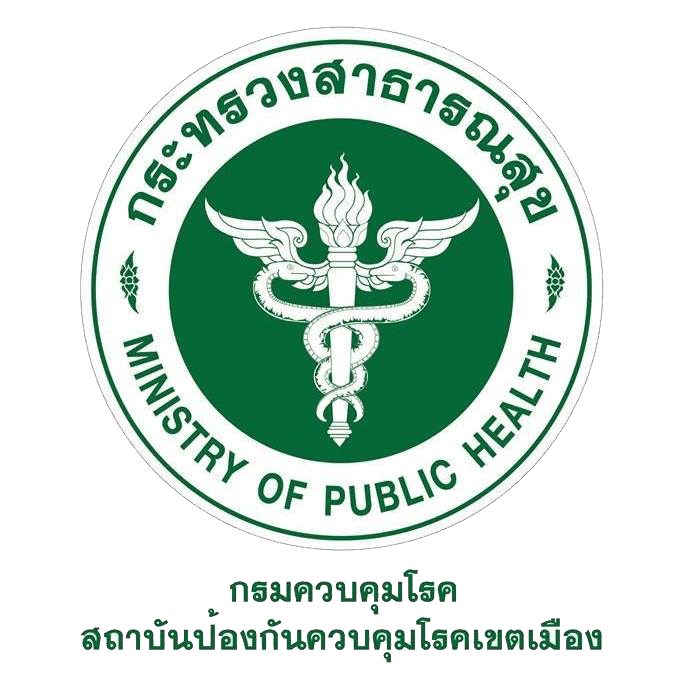การพัฒนารูปแบบการสร้างเสริมความรอบรู้ด้านสุขภาพในการป้องกันโรคพยาธิใบไม้ตับ ในสถานศึกษาต้นแบบ เขตสุขภาพที่ 9
Main Article Content
บทคัดย่อ
การศึกษาครั้งนี้เป็นวิจัยเชิงปฏิบัติการ วัตถุประสงค์เพื่อพัฒนารูปแบบการสร้างเสริมความรอบรู้ด้านสุขภาพในการการป้องกันโรคพยาธิใบไม้ตับ ในสถานศึกษาต้นแบบ เขตสุขภาพที่ 9 นำไปทดลองใช้และประเมินผลการนำไปใช้ในสถานศึกษาต้นแบบในพื้นที่ศึกษา คัดเลือกโรงเรียนแบบเจาะจง เป็นโรงเรียนที่มีความพร้อมในด้านบุคลากร และการมีส่วนร่วมของเครือข่าย โดยมีขั้นตอนการทำวิจัยซึ่งประยุกต์ใช้รูปแบบ PAOR คือ ขั้นวางแผนการดำเนินการ (Planning) ขั้นลงมือปฏิบัติ (Action) ขั้นสังเกต (Observation) และขั้นสะท้อนผล (Reflection) เก็บข้อมูลโดยการสนทนากลุ่ม สังเกต สัมภาษณ์ วิเคราะห์ข้อมูลเชิงปริมาณด้วยสถิติพรรณนา สถิติอนุมาน (Inferential statistic) ในการเปรียบเทียบค่าเฉลี่ย โดยใช้สถิติ Paired sample t-test และวิเคราะห์ข้อมูลเชิงคุณภาพด้วยการวิเคราะห์เชิงเนื้อหา
ผลการศึกษาพบว่า รูปแบบการสร้างเสริมความรอบรู้ด้านสุขภาพในการป้องกันโรคพยาธิใบไม้ตับ ในสถานศึกษา ควรมีองค์ประกอบ ดังนี้ (1) การพัฒนาบุคลากรให้มีความพร้อมในการดำเนินงาน (2) การทำงานแบบบูรณาการในรูปแบบคณะทำงาน (3) การพัฒนาความรู้และทักษะของวิทยากรกระบวนการ (4) การคัดเลือกพื้นที่นำร่อง (5) การติดตามประเมินผล โดยทำการทดลองใช้โปรแกรมการสร้างเสริมความรอบรู้ด้านสุขภาพ เป็นเวลา 2 เดือน กลุ่มตัวอย่างที่เข้าร่วมกิจกรรมตามรูปแบบ จำนวน 40 คน ประสิทธิผลของโปรแกรมการสร้างเสริมความรอบรู้ด้านสุขภาพฯ ก่อนและหลังการทดลอง พบว่าค่าคะแนนความรอบรู้ด้านสุขภาพและพฤติกรรมการป้องกันโรคพยาธิใบไม้ตับ เพิ่มขึ้น อย่างมีนัยสำคัญทางสถิติ (p-value < 0.05)
การขยายงโครงการสร้างเสริมความรอบรู้โรคพยาธิใบไม้ตับในสถานศึกษา ควรขยายผลในกลุ่มของผู้ปกครอง ชุมชน เพื่อให้เกิดผลลัพธ์ที่ยั่งยืน เพราะการขับเคลื่อนงานโรงเรียนรอบรู้ด้านสุขภาพต้องอาศัยการมีส่วนร่วมของภาคีเครือข่ายทุกภาคส่วนในสังคม ได้แก่ ผู้บริหารโรงเรียน ครู นักเรียน ชุมชน เป็นกำลังสำคัญในการขับเคลื่อนการดำเนินงานให้บรรลุผลสำเร็จ
Article Details
บทความที่พิมพ์ในวารสารสถาบันป้องกันควบคุมโรคเขตเมือง ถือว่าเป็นผลงานวิชาการ งานวิจัยและวิเคราะห์ ตลอดจนเป็นความเห็นส่วนตัวของผู้เขียนเอง ไม่ใช่ความเห็นของสถาบันป้องกันควบคุมโรคเขตเมือง หรือคณะบรรณาธิการแต่ประการใด ผู้เขียนจำต้องรับผิดชอบต่อบทความของตน
เอกสารอ้างอิง
กองโรคติดต่อทั่วไป กรมควบคุมโรค. เอกสารประกอบการประชุมแนวทางการดำเนินงานโรคพยาธิ ใบไม้ตับปีพ.ศ 2563. การประชุมชี้แจงแผนดำเนินงานโรคพยาธิใบไม้ตับ; 10 พฤศจิกายน พ.ศ 2563; ณ ห้องประชุมโรงแรมเดอะริช จังหวัด นครราชสีมานครราชสีมา: สำนักงานป้องกันควบคุมโรคที่ 9 นครราชสีมา; 2561.
สำนักงานป้องกันควบคุมโรคที่ 9 กรมควบคุมโรค. แผนงานโครงการโรคพยาธิใบไม้ตับ. การประชุมจัดทำแผนงานโครงการ ประจำปีงบประมาณ 2564; 21 มิถุนายน พ.ศ. 2564; ณ ห้องประชุมสำนักงานป้องกันควบคุมโรคที่ 9 นครราชสีมา. นครราชสีมา: สำนักงานป้องกันควบคุมโรคที่ 9 นครราชสีมา; 2564.
อังษณา ยศปัญญา. ความชุกและปัจจัยที่มีผลต่อการเกิดโรคพยาธิใบไม้ตับ จังหวัดเลย ปี 2556 . วารสารสำนักงานป้องกันควบคุมโรคที่ 6 จังหวัดขอนแก่น 2558; 22 (1): 89-97.
กองสุขศึกษา. การเสริมสร้างและประเมินความรอบรู้ด้านสุขภาพ และพฤติกรรมสุขภาพ. กรมสนับสนุน บริการสุขภาพ; 2561.
ชลดา อานี. ประสิทธิผลของโปรแกรมการสร้างเสริมความรอบรู้ทางสุขภาพโดยการจัดการเรียนรู้แบบใช้คำถามเพื่อการสร้างเสริมพฤติกรรมการป้องกันการมีเพศสัมพันธ์ในนักเรียนระดับมัธยมศึกษาตอนต้น จังหวัดนนทบุรี.วารสารศึกษาศาสตร์ปริทัศน์ 2560; 32 (2): 137-143.
สำนักงานโครงการขับเคลื่อนกรมอนามัย 4.0 เพื่อความรอบรู้ด้านสุขภาพของประชาชน. คู่มือแนวทางการพัฒนาโรงเรียนรอบรู้ด้านสุขภาพ. [อินเทอร์เน็ต]. [สืบค้นเมื่อวันที่ 6 มี.ค. 2561]. แหล่งข้อมูล https://anyflip.com/kwrps/khql/basic.
Krejcie, R.V. & Morgan, D.W. (1970). “Determining Sample Size for Research Activities”. Educational and Psychological Measurement, 30(3): 607-610.
สำนักสื่อสารความเสี่ยงและพัฒนาพฤติกรรมสุขภาพ กรมควบคุมโรค. (2563). เอกสารประกอบการการดำเนินงานสื่อสารความเสี่ยงเสริมความรอบรู้ด้านการป้องกันควบคุมโรคและภัยสุขภาพ , 23 พฤศจิกายน 2563; ณ ห้องประชุมโรงแรมอักษร จังหวัดระยอง: กรมควบคุมโรค; 2563.
ระบบสารสนเทศเพื่อการบริหารการศึกษา โรงเรียนสะแกพิทยาคม, 2564 ข้อมูลจำนวนนักเรียนชั้นมัธยมศึกษาปีที่ 4. [อินเทอร์เน็ต]. [สืบค้นเมื่อ 20 มกราคม พ.ศ. 2564]. แหล่งข้อมูลhttps://data.boppobec.info/emis/index_area.php?Area_CODE=101730.
ขวัญเมือง แก้วดำเกิง. ความรอบรู้ด้านสุขภาพ. พิมพ์ครั้งที่ 1 กรุงเทพฯ: อมรินทร์พริ้นติ้ง แอนด์ พับลิชชิ่ง; 2562.
สำนักสื่อสารความเสี่ยงและพัฒนาพฤติกรรมสุขภาพ. การประเมินความรอบรู้ด้านสุขภาพในการป้องกันควบคุมโรคและภัยสุขภาพของประชาชน ปี 2563.กรมควบคุมโรค; 2563.
วาริณี เอี่ยมสวัสดิ. การสร้างเสริมสุขภาพในสถานศึกษา. วารสารความปลอดภัยและสุขภาพ 2561; 11 (2): 1-11.
Nutbeam D. (2000). Health literacy as a public health goal: a challenge for contemporary health education and communication strategies into the 21st century. Health promotion international, 15(3): 259-267.
เกียรติพงษ์ อุดมธนะธีระ, หลักการ 4 m. [อินเทอร์เน็ต]. [สืบค้นเมื่อ 10 พฤษภาคม พ.ศ. 2564]. แหล่งข้อมูลhttp://ioklogistics.blogspot.com.
ชลดา อานี. ประสิทธิผลของโปรแกรมการสร้างเสริมความรอบรู้ทางสุขภาพโดยการจัดการเรียนรู้แบบใช้คำถามเพื่อการสร้างเสริมพฤติกรรมการป้องกันการมีเพศสัมพันธ์ในนักเรียนระดับมัธยมศึกษาตอนต้น จังหวัดนนทบุรี.วารสารศึกษาศาสตร์ปริทัศน์ 2560; 32 (2): 137-143.
กรมอนามัย. (2558). แนวทางการพัฒนาสู่โรงเรียนรอบรู้ด้านสุขภาพ. [อินเทอร์เน็ต]. [สืบค้นเมื่อวันที่ 6 มี.ค. 2562]. แหล่งข้อมูล http://203.157.19.59/upload-file/doc/files/22022020-113926-3992.pdf.


